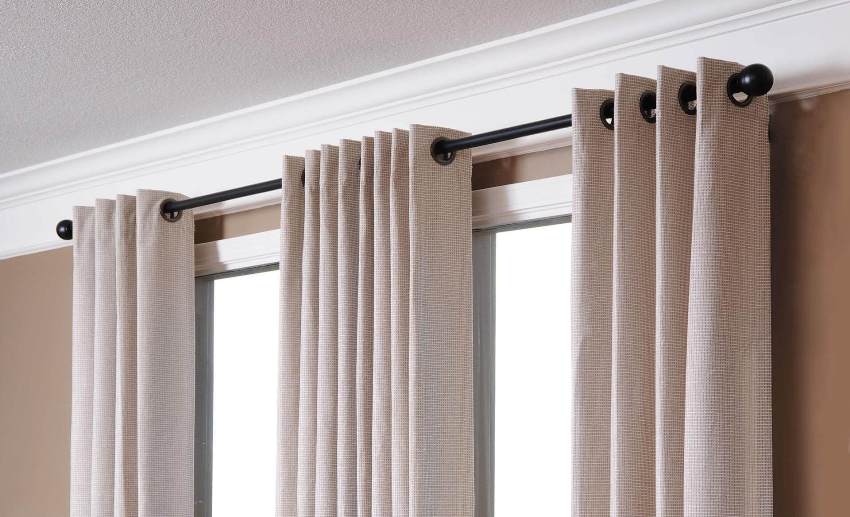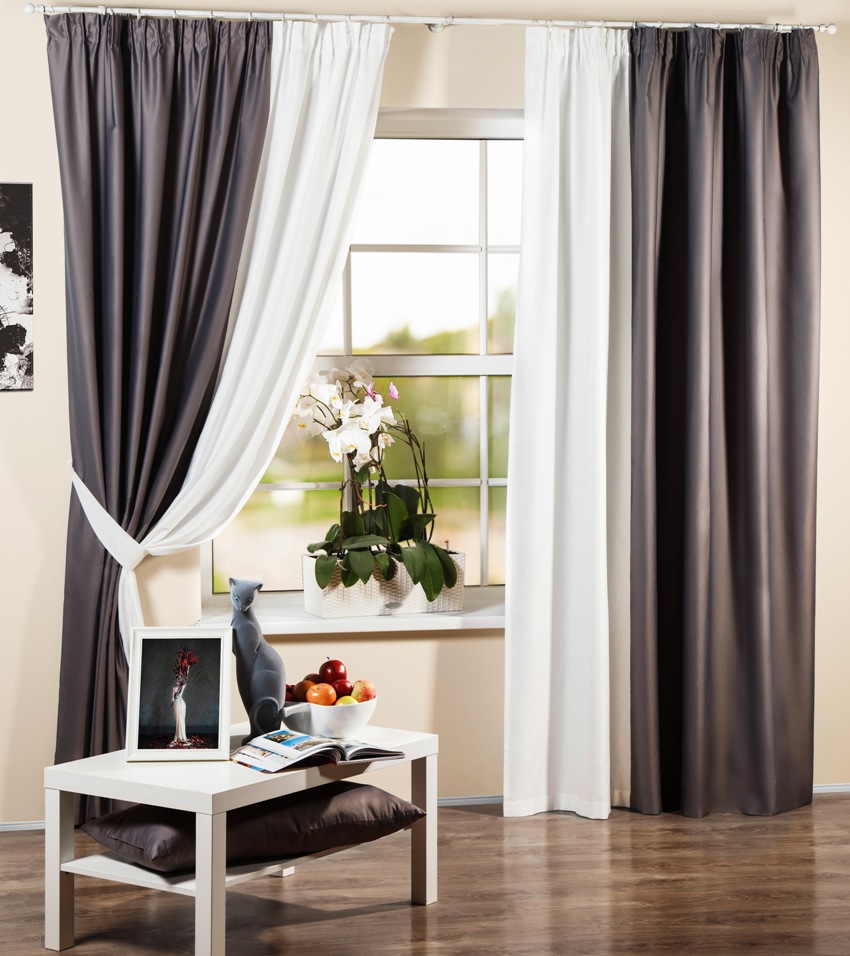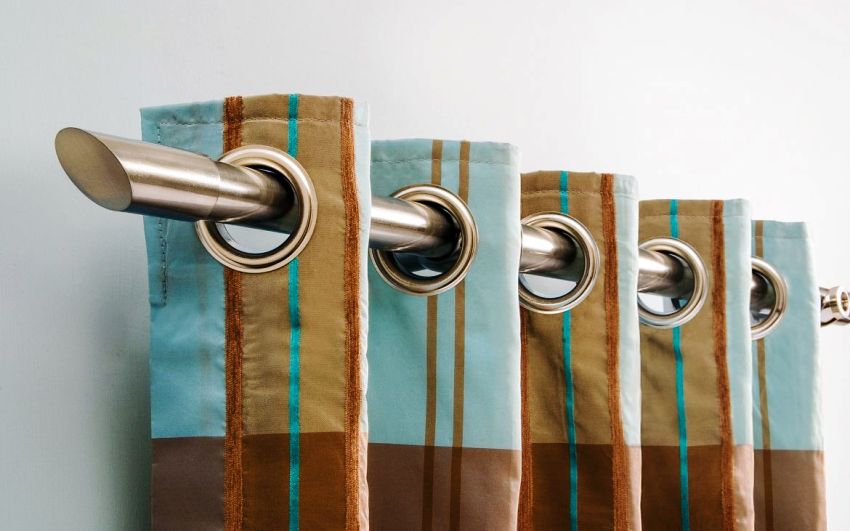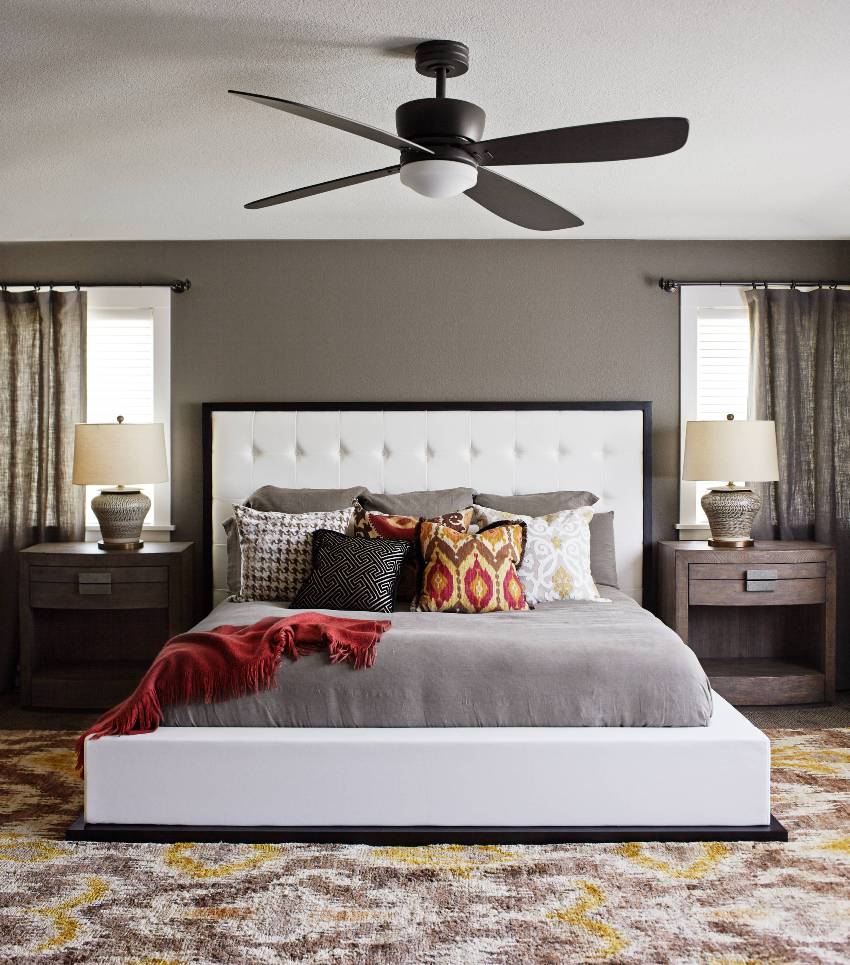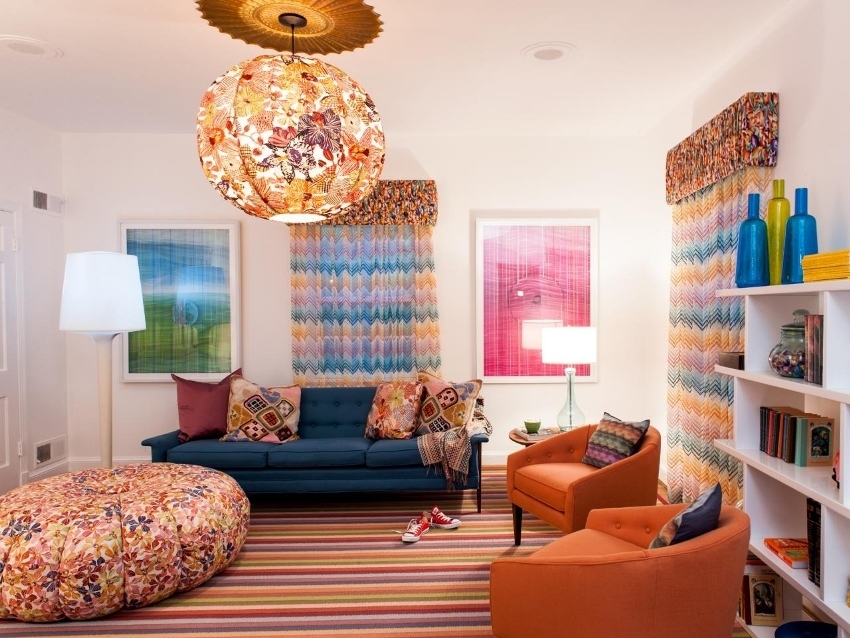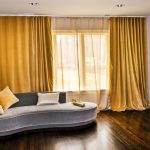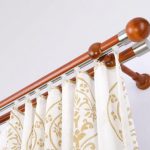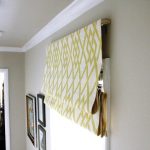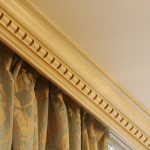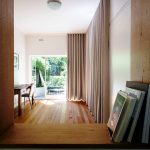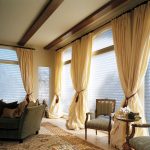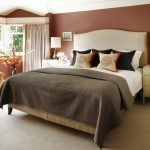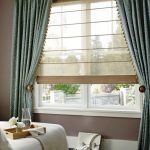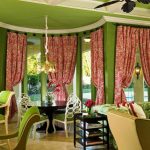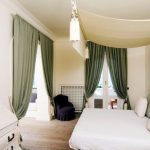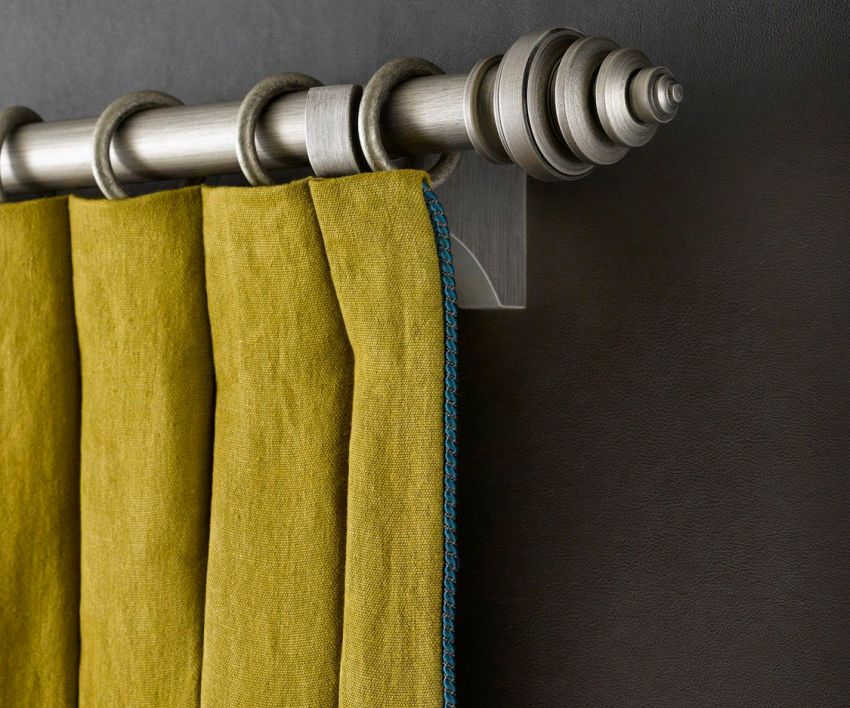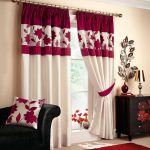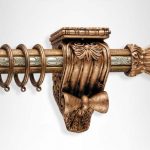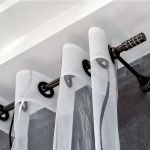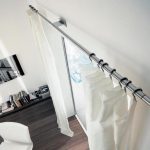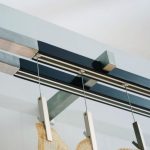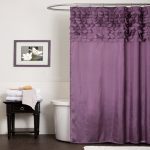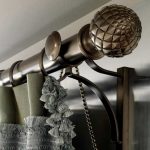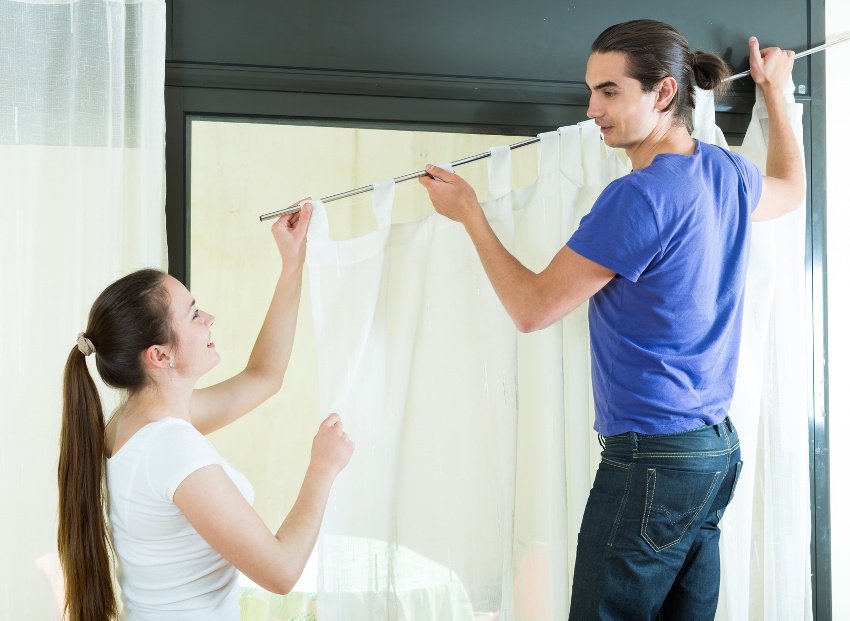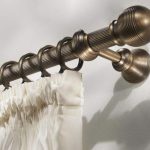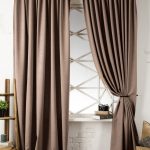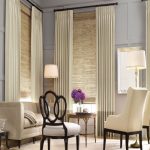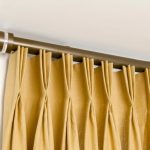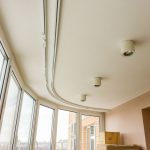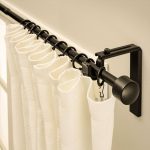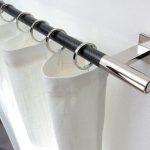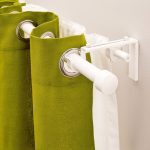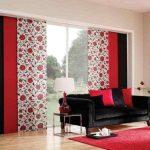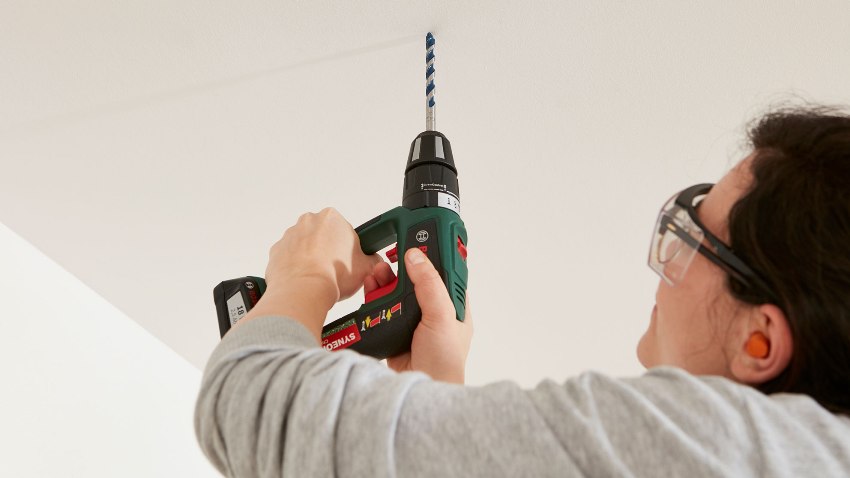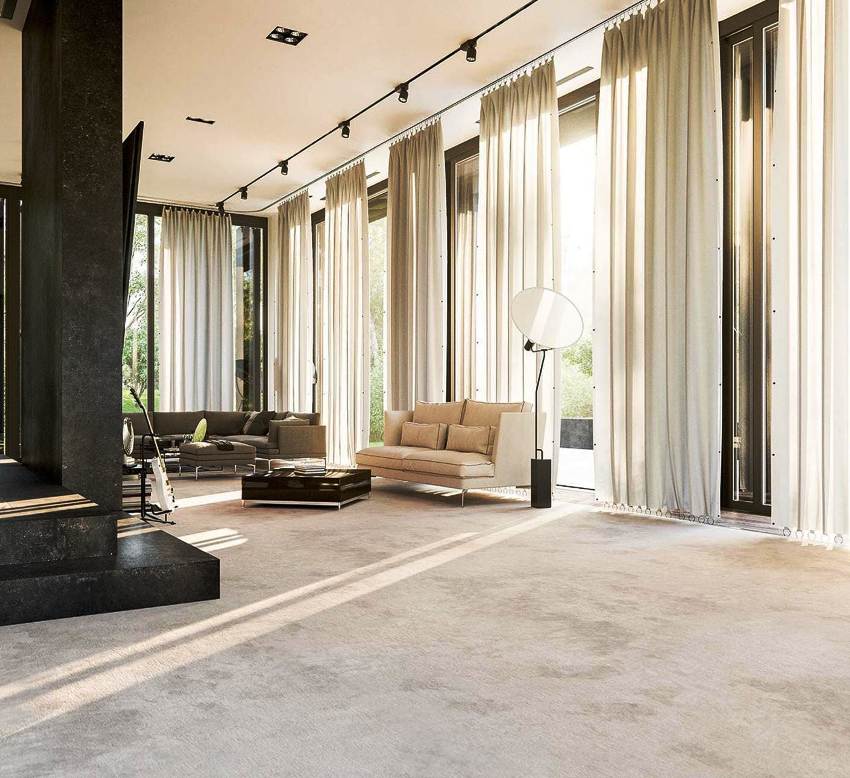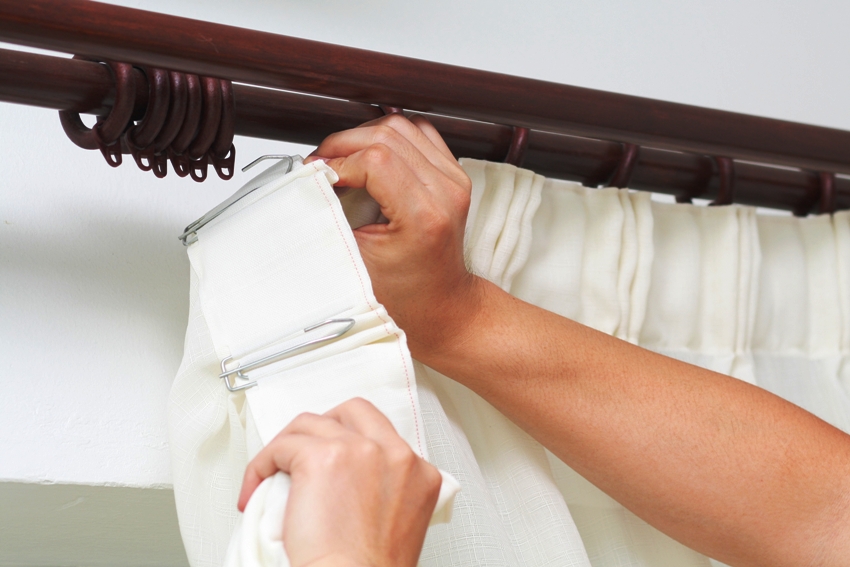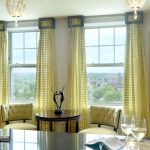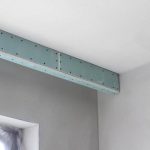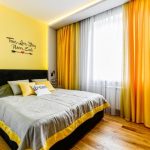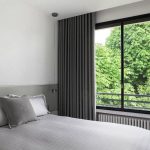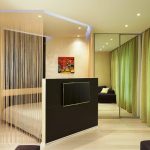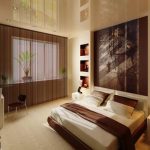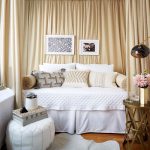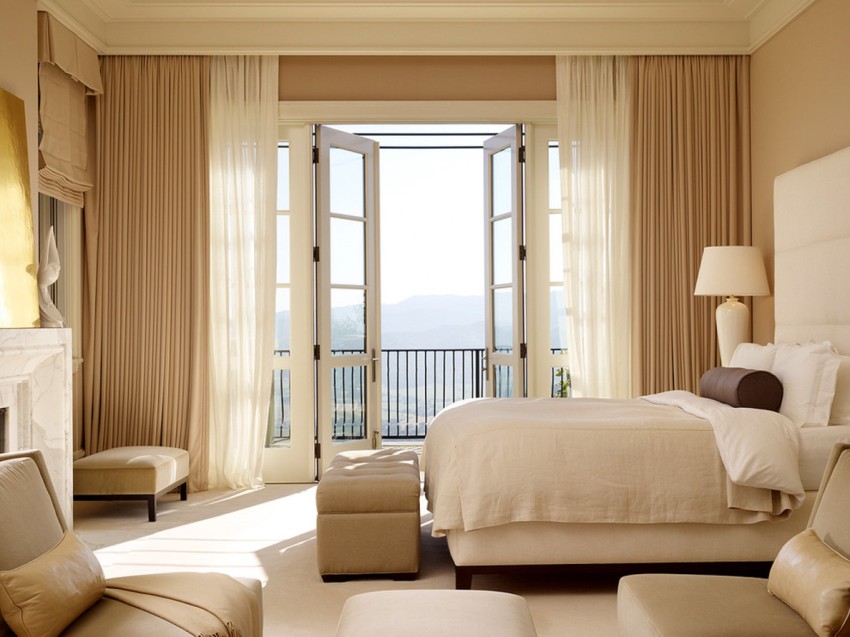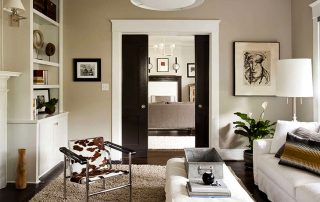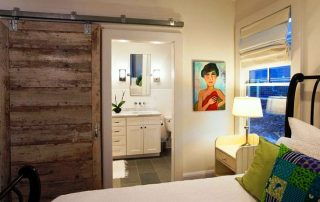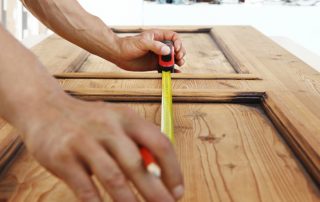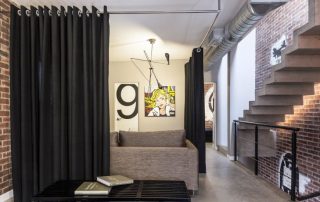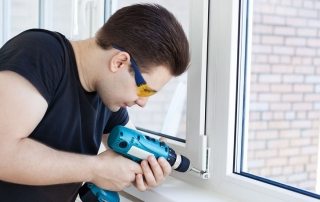Decorating a window opening is the final stage in decorating the interior of the room. Correctly selected curtains for curtains and drapes can bring coziness, warmth and comfort to the room. What are the options for cornices? How to choose the right option depending on the style of the room and the type of curtains? What are the features of product installation? Answers to these and many other questions can be found in this article.

When choosing curtains for curtains, you should focus on the functionality of the room, the general style of the room, as well as the type of fabric
Content [Hide]
- 1 What are curtains: features of a curtain fastener
- 2 Curtain: this is a ceiling or wall element of the interior
- 3 Configuration of wall curtains for curtains
- 4 Varieties of construction of ceiling curtains for curtains
- 5 Material for making wall and ceiling curtains
- 6 How to hang the curtain correctly: features of installing the curtain rod for curtains
What are curtains: features of the curtain fastener
The first step is to figure out what a curtain is. This is a horizontal structure of various configurations on which curtains, curtains or drapes are hung. Curtain is synonymous with cornice.
It can be considered that the curtain is an integral attribute of the room, which not only serves to hold the canvas, but also maintains the necessary style of the room. It makes the window opening a bright accent of the interior. The type of curtain for curtains is selected based on the type of window and its location.
Cornices can be made of various materials, which affects the perception of the interior of the room. They can completely "dissolve" in the environment. For this, a secret version of the product is selected, which contributes to a visual increase in space. The curtain can become an accent element of the room. It can be used for a variety of simple and complex ceilings with one or more levels.

In order for the selected curtains to match the general style of the apartment, you should pay attention to some points of their selection
Depending on the type of product design, the curtain can be arranged in different ways. However, it includes the following main elements. At the ends of the cornice, finials can be installed, which are represented by curly tips. They are mainly used for round curtains.
A rod, profile or string can act as a basis for hanging curtains. To fix the base of the curtain, special suspensions or brackets are used in the amount of two or more, which depends on the length of the curtain.Two elements are suspended on the sides of the product, and at least one is located in the middle and acts as a supporting link so that the curtain does not sag under the weight of the curtains. The length of the cornice can be at the level of the width of the window opening or cover the entire wall of the room.
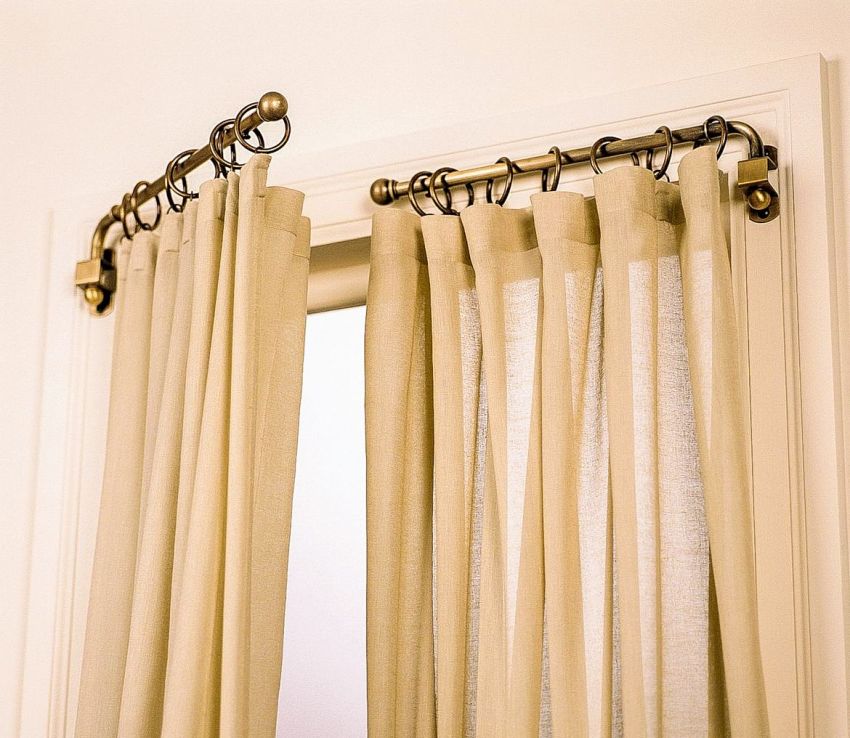
The choice of curtains affects their visual correspondence to curtains and other decorative elements.
Curtain: this ceiling or wall element of the interior
It is customary to say that the cornice is an element designed for attaching curtains, which can be of two types: ceiling and wall. Wall-mounted eaves are the traditional option. This curtain can be installed regardless of the type of ceiling. The product is capable of supporting significant weight.
Important! Roman blinds can only be hung from wall curtains, which will ensure a snug fit of the canvas to the window.
Ceiling models are installed in the case when it is impossible to fix wall products, and they are also selected based on the design concept of the room. If the wall is made of plasterboard, it is advisable to attach the cornice to the ceiling. Also, this option is used in the case of a small gap between the window opening and the ceiling. Ceiling curtains can visually increase the height of the room, making it more majestic.
According to the material of manufacture, such types of curtains for curtains are distinguished: wooden, metal, plastic and combined. Depending on the type of configuration, the cornices are string, round, profile, tire, baguette, telescopic, spacer. Based on the number of curtains suspended, single-row, double-row and three-row curtains are distinguished. The first option is used only for tulle. Tulle and curtains can be placed on a two-row curtain, and tulle, curtains and a lambrequin on a three-row curtain.
Configuration of wall curtains for curtains
Next, we will consider what curtains are for wall location, depending on the design. Round, or tubular, curtain rods are traditional and customary. Modern models are represented by single-row and double-row products with parallel rods of different diameters.
On both sides they are supplemented with curly tips - finials, which carry a decorative function. They can be made in the form of geometric elements, petals, flowers, animal heads. Modern options are often decorated with enamel and rhinestones, as shown in the photo of curtains.
Important! The round cornice provides for certain requirements for the selection of fasteners for curtains, the color and decorative design of the curtains, which should be in harmony with the rod and tips.
A type of tubular curtains is a telescopic structure that can be folded and unfolded based on the dimensions of the window opening and the width of the wall. This model can be used for different rooms.
A model similar to the telescopic version is the curtain spreader. A spring is located in the middle of the tubular element, which pushes the ends outward. Such a cornice does not need additional fastening with the help of brackets; it independently rests against the walls with its lateral ends. This option of curtains should be chosen for strong walls, which the structure is not capable of damaging. In addition, it must be borne in mind that this cornice cannot hold heavy curtains.
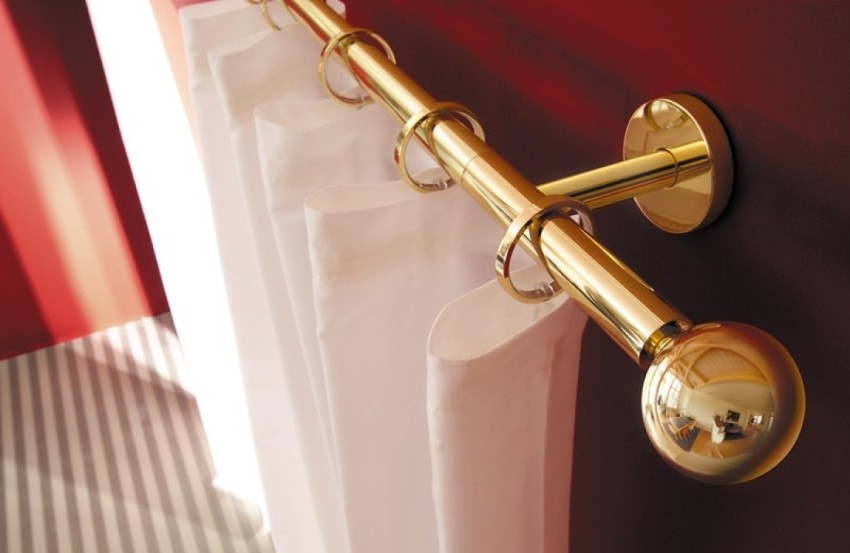
Round metal products are ideal for heavy curtains, because such curtain rods are very strong and reliable
String curtains are represented by two brackets, equipped with special devices for stringing the strings, which are a metal cable that can withstand a lot of weight.Such a minimalist and modern version of wall curtains can give a room the necessary charm. This product will ideally fit into modern, hi-tech and minimalism. The disadvantage of such cornices is the likelihood of loosening under the heavy weight of the devices that fix the cable, which will entail sagging of the entire structure.
Varieties of construction ceiling curtains for curtains
Tire curtain rods are represented by a structure that has a special groove, where fastening mechanisms for curtains are inserted. Such curtains are double-row. They are not intended to accommodate additional pompous details of the textile decoration of a window opening in the form of bandeau or lambrequins, which will look stylistically inappropriate on an insufficiently majestic structure.
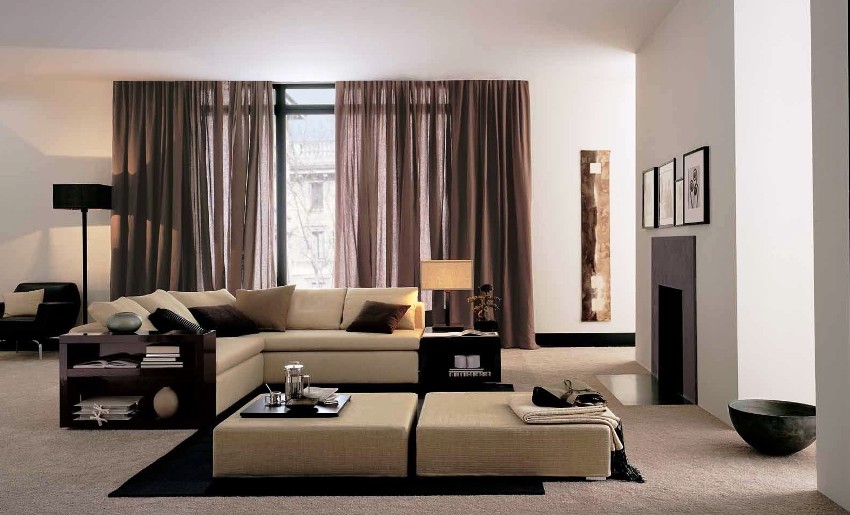
Ceiling curtain rods are installed using various decorative elements to hide the fastening mechanism itself and make the room even more attractive
This option is the most preferable for a ceiling location, since it eliminates the formation of a gap between the ceiling and the structure. This visually stretches the room, which is shown by photos of ceiling curtains for curtains.
The baguette cornice is represented by a tire structure, which is complemented by a carved decorative strip. In modern models, a special place is organized under the bar for LED backlighting, which will give a special charm to the curtains.
Profile curtains are similar to bus curtains. The exception is that in the first version, the rows are represented by separate slats, separated from each other, and the tire cornice has a flat structure with grooves. The advantage of this type is its flexibility. Such a curtain can be installed along the contour of a curly window. With the help of such a profile, it is possible to round off the edges, hiding the unattractive appearance of the sidewalls. This is a good option for a bay window, as shown in the photo of curtains for curtains in the hall.
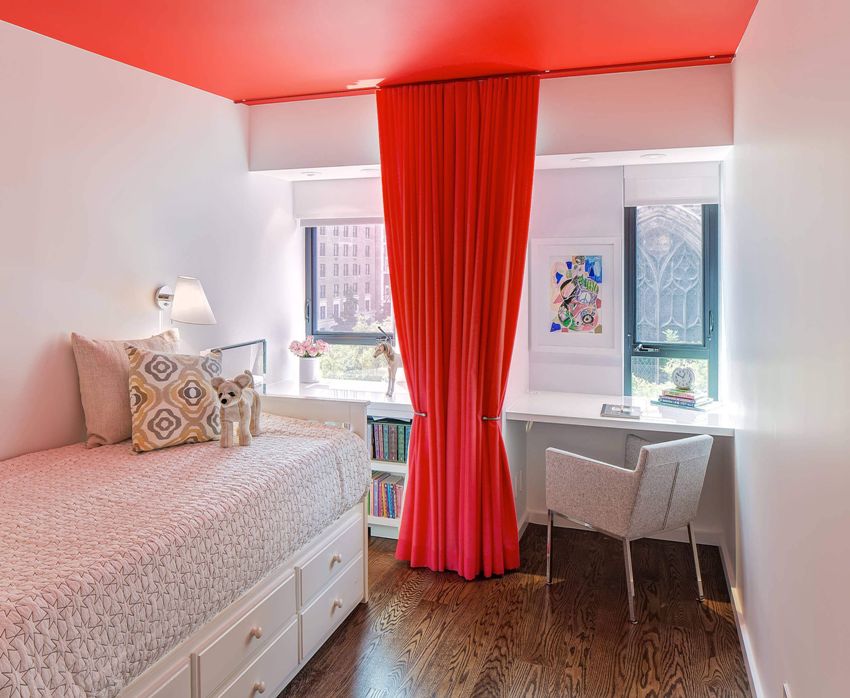
Mounting ceiling cornice slightly more difficult than fixing conventional wall structures
Such curtain rods can be equipped with a decorative hood with various patterns that covers the curtain mount. This thin plank can be embossed, gilded, or finished with a fabric covering. This version of the curtain is often included in the kit for a stretch ceiling and is represented mainly by a three-row structure, on which you can simultaneously place tulle, curtains and a soft lambrequin. The disadvantages of the product include the relatively high (in comparison with analogues) price of curtains for curtains.
Related article:
Curtains with eyelets: a functional and practical way to decorate a window
The advantages and disadvantages of using. Choosing the length and calculating the required number of eyelets. Features of self-production.
Material for making wall and ceiling curtains
Before choosing curtains for curtains, it is worth considering the characteristics of the products, depending on the material of manufacture. Eaves can be plastic, metal, aluminum and wood.
Plastic curtains for curtains differ in a variety of shapes, colors and affordable prices. The structure can be hidden behind a suspended ceiling, which creates the illusion of curtains floating in the room, or pasted over with special materials that imitate different coatings in the form of wood, metal, fabric or leather, which opens up many possibilities for decoration. Due to the plasticity of the material, the product can take a curved shape. This option is best combined with white metal-plastic windows. The structure, painted in a color that is in harmony with the interior, will complement the decoration of the walls, ceiling and set off the tone of the curtains.
Plastic does not react to moisture, temperature fluctuations, does not corrode, deformation changes, is easy to install and easy to use. The set of plastic cornice includes the profile itself, hooks, plugs, brackets and swivel elements. How much do curtains cost? This is another positive feature of the product. The price of the cornice is in the low and medium price segment.
Wooden curtains for curtains give the room a regal majestic look. They can be tubular or baguette. Structures can withstand significant weight. They are harmoniously combined with classic heavy curtains made of solid noble fabrics like jacquard, brocade, tapestry. Despite their massiveness, the products are able to emphasize the elegance of light flowing curtains. This is a good option for any interior, where natural wood furniture, parquet or parquet flooring, wood panels and other decorative elements made of wood are used to decorate the room.
Important! Such structures have a massive appearance, which will look ridiculous when decorating a window opening in a small room.
What are the curtains for curtains: characteristics of metal products
Considering the types of curtains, you should pay special attention to aluminum cornices, which are durable and reliable. The material is used for ceiling structures. The products have a minimum thickness, which allows them to be hidden in a false ceiling structure or hidden under a skirting board. Such a cornice is able to withstand significant weight without undergoing deformational changes. You can hang curtains of any material with heavy lush draperies on it. Products can be made in silver, gold, bronze or black, as shown in the photo of the ceiling curtains.
Aluminum curtains have different configurations, which allows you to arrange even a corner or radius window area. With the help of a decorative self-adhesive film, the product can be given an original appearance, which will emphasize the style of the room.
Considering the question of how much curtains for curtains cost, we can say that the most expensive are steel products, which are ideal for placing multi-row curtains made of heavy materials. They have a presentable appearance and are distinguished by their strength, good quality, reliability and durability. From this material, wall curtains are made, which need reliable high-quality wall fastening.
Metal curtains for curtains can be presented in white, black, gold plated, copper or brass. Products usually have a glossy or matte texture. Glossy cornices fit perfectly into classic interiors, and matte ones are suitable for modern stylistic trends. Forged curtains for curtains are especially popular.
Helpful advice! You can choose a combined option, made of plastic and metal with wood inserts, which fits perfectly into a modern interior.
How to properly hang the curtain: installation features of the curtain rod
For the installation of any type of curtain, you should prepare a pencil, tape measure, level, dowels, screws, screwdriver, drill or puncher.
Fastening curtains for curtains to the wall begins with marking, and it is necessary to retreat from the ceiling 10-15 cm. In this case, a distance of at least 5 cm from the top of the window opening must be ensured. A horizontal line is drawn using the building level, on which the center of the window is marked. From the edge of the window opening horizontally, 20-40 cm is deposited, depending on the size of the cornice, to install the brackets.According to the markings, holes are made in the wall using a perforator. Dowels are placed in them, followed by fixing the bar by means of screws. Next, a bracket is installed on which the assembled cornice is located.
The process of installing a ceiling curtain for curtains depends on the material of manufacture of the structure itself and the version of the ceiling. Ceiling cornices are most often made of plastic. The different options are shown in the photo. The price of curtains for curtains is acceptable, which is explained by the demand for products. Such curtain rods have a standard length. However, it is possible to increase the required size so that the structure occupies the entire width of the wall. To do this, you should purchase two products of the same type, color and texture.
Before installing the curtain on the ceiling, marking is done. The middle of the window opening on the ceiling is measured. The rest of the attachment points are laid from it, which are performed every 60 cm on both sides. The same procedure is carried out with a plastic curtain that is trimmed or extended to the desired length. Holes are made in the cornice and concrete ceiling at the designated points. If you plan to hang heavy curtains, the hole pitch needs to be reduced.
Important! Ceiling curtains made of wood or metal have pre-cut holes for fastening.
Dowels are inserted into the holes in the ceiling. The curtain is attached with screws. The holes can be decorated using special plastic covers.
Quite often, the curtain is fixed to the ceiling with liquid nails, which set instantly. The finished structure is capable of withstanding a load of up to 90 kg.
Do-it-yourself ceiling curtain installation on a suspended ceiling
In the case of organizing a false ceiling, you should consider in advance the place for attaching the curtain cloth. There are two mounting options: open and closed. If you leave a small niche between the wall and the suspended ceiling, you can organize the hidden fastening of the curtain directly to the concrete ceiling. Another method involves the installation of an embedded part in the form of a wooden bar or a metal profile at the planned location of the curtain attachment. After the installation of the suspended ceiling, the structure is fixed to the embedded element through the drywall.
If a decision is made to install a modern curtain after installing a suspended ceiling, there are two options for resolving the issue. The first involves the use of special butterfly dowels. They are attached like regular dowels, which are inserted into holes in drywall. Screws are twisted into them, during which the dowel is opened, which ensures reliable fastening. Despite the high-quality fixation, only light curtains can be hung on such a curtain.
The second method allows you to hang multi-level curtains for heavy curtains from a plasterboard false ceiling. For this purpose, the Driva concrete anchor should be used as fasteners. To fix the tire in the ceiling through the drywall using a long drill, a hole is made about 5 cm deep. The curtain is fastened through the drywall with anchors, which are fixed with screws. This simple yet effective technology provides a secure and durable fit.
Important! The length of the concrete anchor is selected based on the thickness of the suspended ceiling, taking into account the depth of the hole in the base ceiling.
Technology for installing curtains for curtains on a stretch ceiling
It is impossible to directly install the curtain on the stretch ceiling. If it is already stretched, you will have to choose a wall type of cornice.If its installation is planned, the curtain for the stretch ceiling should be attached in advance. There are two ways to do this.
The first option assumes the following sequence of actions. Before the installation of the stretch ceiling, marking is performed under the embedded beam, which is then fixed to the base ceiling. Then a profile guide for the web is installed. After installing the tensioning structure, the curtain is attached to it with dowel-nails through the PVC sheet. It is better to burn through the holes for fasteners. They should not be punctured or broken through, as this may compromise the integrity of the coating. In places where nails pass, it is necessary to install polymer gaskets.
Important! The thickness of the embedded beam is selected in such a way as to ensure a tight abutment of the lower edge of the element to the PVC sheet. To check this moment, you should use the mounting wedges.
This is a common option for attaching curtains for curtains under a stretch ceiling, which requires careful opening and closing of the curtains so as not to damage the integrity of the stretch structure.
The second method involves organizing a hidden curtain. To do this, before starting the installation of the ceiling, the markings are performed, which is necessary for attaching the wooden beam to the surface to which the tension structure will be fixed. It should be located at some distance from the wall, depending on the width of the curtain, as a rule, this value is equal to 20-30 cm. A profile for mounting the tension cloth will be attached to the bottom of the wooden beam.
The PVC material can also be brought behind the timber, which will provide a more aesthetic appearance of the ceiling, where unpainted wood is hidden behind a film covering. To do this, instead of a fastening profile, a bending profile is used, which is installed at the upper edge of the beam adjacent to the base ceiling.
Thus, a niche is formed between the wall and the ceiling for the hidden installation of the curtain. This option provides an unusual and original look of window decoration, lightening the situation and adding volume to the space.
It is advisable to use the hidden version of attaching curtains under a stretch ceiling in the case of an irregular room near corner windows or in the form of a semicircle. The hidden cornice allows you to repeat the outline, veiling the inconvenience of the layout, thereby providing a stylish and effective accent in the interior, as shown in the photo of curtains for curtains under a stretch ceiling.
Hidden cornices can be decorated with decorative moldings, decorated with patterned elements, which adds sophistication and originality to the atmosphere.
A correctly selected and installed curtain for curtains is the guarantor of a successful decoration of the window opening. From the existing options for curtain rods, differing in configuration and material of manufacture, you can choose the most suitable type, corresponding to the selected ceiling finish. As a result, the curtain will harmoniously fit into the style of the room, emphasizing the originality of the window design.
